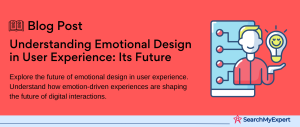What is Design Thinking? Definition and Core Principles
Design Thinking, a term that resonates strongly in the creative and business worlds, is a solution-focused approach geared toward problem-solving. It’s more than just a buzzword; it’s a mindset and a methodology that has revolutionized the way organizations approach challenges.
Core Principles
At its core, Design Thinking is rooted in empathy and centered around understanding the user’s needs and experiences. This methodology involves five stages: Empathize, Define, Ideate, Prototype, and Test. Each stage plays a crucial role in ensuring that the end product is not only innovative but also meets the actual needs of the users.
- Empathize:
This initial stage is all about gaining an insightful understanding of the user’s experiences and challenges. It involves engaging with users, observing their behaviors, and immersing oneself in their environment to understand their emotional needs and motivations. - Define:
Here, the insights gathered during the Empathize phase are synthesized. This stage involves defining the core problems identified during the empathy phase in a user-centered manner. - Ideate: The Ideate phase is where creativity comes into play. Teams brainstorm a range of ideas and solutions to the defined problems, fostering an environment where no idea is too outlandish.
- Prototype:
Prototyping involves turning ideas into tangible products. This stage is crucial for visualizing how real users would interact with the product and for identifying any potential issues. - Test: The final stage involves rigorous testing of the prototype. Feedback is sought from users, leading to refinements and iterations of the product.
Why is Design Thinking in UX? Benefits and Advantages Of Traditional UX Methods
Incorporating Design Thinking into User Experience (UX) design brings numerous benefits and advantages over traditional methods.
- User-Centricity: By prioritizing empathy, Design Thinking ensures that the UX design is deeply rooted in the real needs and wants of the user.
- Enhanced Creativity:
The Ideate phase of Design Thinking encourages out-of-the-box thinking, leading to more innovative and creative UX solutions. - Iterative Approach:
Design Thinking embraces the concept of iteration. By continuously testing and refining ideas, UX designers can develop solutions that are more aligned with user expectations. - Cross-Functional Collaboration: Design Thinking fosters collaboration across different teams and disciplines, bringing diverse perspectives to the problem-solving process.
The Design Thinking Mindset: Empathy, Human-Centeredness, and Embracing Iteration
Embracing the Design Thinking mindset involves a fundamental shift in approach. It requires:
- Empathy:
Understanding and sharing the feelings of others. In UX, this means deeply understanding the user’s perspective. - Human-Centeredness:
Focusing on human values and needs in every aspect of the design process. - Embracing Iteration:
Understanding that the first solution might not be the best. Iteration allows for continuous improvement based on real user feedback.
Understanding User Needs (Empathize)
Research Techniques in Design Thinking
Understanding user needs is the cornerstone of Design Thinking, especially in UX design. The ‘Empathize’ stage, as its name suggests, is about building a deep, empathetic understanding of the users. Various research techniques are employed to achieve this understanding:
User Interviews:
Conducting user interviews is a direct approach to understanding user needs. These interviews can be structured, semi-structured, or unstructured, depending on the nature of the information needed. Key strategies include:
- Preparing open-ended questions to encourage users to share their thoughts and experiences.
- Actively listening and observing non-verbal cues to gain deeper insights.
- Following up with probing questions to explore user responses in more detail.
Observation:
Observing users in their natural environment offers invaluable insights into their behaviors, preferences, and challenges. Techniques include:
- Contextual Inquiry: Observing users as they interact with existing products or perform tasks.
- Shadowing:
Following users throughout their day to understand their daily routines and challenges.
Surveys:
Surveys are useful for gathering quantitative data from a large user base. They can provide broad insights into user preferences and behaviors. Effective survey design includes:
- Crafting clear and concise questions.
- Using a mix of open-ended and closed-ended questions.
- Ensuring anonymity to encourage honest feedback.
Persona Development:
Personas are fictional characters created based on user research. They represent the different user types that might use a service, product, interface, or brand. Key aspects of persona development include:
- Demographics: Age, gender, occupation, and education level.
- Psychographics: Interests, attitudes, and motivations.
- User Goals:
What the user wants to achieve by using the product or service.
Uncovering Pain Points and Hidden Needs
To create a product that resonates with users, it’s essential to uncover not just the obvious needs but also the hidden pain points and motivations. This involves:
- Deep-Dive Interviews:
Going beyond standard questions to explore the user’s deeper motivations, fears, and desires. - Empathy Mapping: This tool helps in visualizing user attitudes and behaviors, helping to uncover not just what users are doing, but why they are doing it.
- Journey Mapping:
Creating a user’s journey map helps in understanding the user’s experience with a product or service, from the first point of contact to the last. This can highlight pain points and areas for improvement. - Analysis of Non-Use Cases: Understanding why users might avoid a product or feature can be just as informative as understanding why they use it.
Building Empathy: Using Research Insights to Develop User-Centric Design Goals
Building empathy requires translating research insights into actionable design goals. This involves:
- Synthesizing Research Data: Collating and analyzing data from interviews, surveys, observations, and other research methods to identify common themes and insights.
- Creating Empathy Maps:
Visual tools that depict what users say, think, do, and feel, helping designers to step into the user’s shoes. - Developing User Stories: Creating narratives that describe the user’s experience with the product, focusing on their needs, goals, and the tasks they are trying to accomplish.
- Setting Design Goals: Based on the insights gathered, setting specific, user-centric goals for the design process. These goals should address the user’s main pain points and needs.
Framing the Challenge: Formulating a Clear and Actionable Problem Statement
Once a deep understanding of user needs is established, the next step in Design Thinking is defining the problem—a critical stage that sets the direction for all subsequent design efforts. This involves crafting a problem statement that is both clear and actionable.
- Understanding the Essence of the Problem:
This involves distilling the insights gathered during the Empathize phase into a core problem. The key is to focus on the ‘why’ behind user behaviors and needs. - Crafting the Problem Statement:
A well-articulated problem statement should be:
- User-centered: Focused on the needs and experiences of the user, rather than technical specifications.
- Clear and concise: Easily understood by everyone involved in the project.
- Inspiring:
Encouraging a creative and solution-focused mindset.
- Avoiding Solution Bias: It’s crucial to frame the problem without implying a particular solution. This open-ended approach fosters innovative thinking in later stages.
- Iterative Refinement:
The problem statement should be revisited and refined as new insights are gained throughout the design process.
Identifying Core Needs and Areas of Opportunity
The Define stage also involves identifying the core needs of the users and pinpointing areas where there are opportunities for innovation and improvement.
- Analyzing User Data: Reviewing the data from the Empathize phase to identify recurring themes, needs, and pain points.
- Identifying Gaps and Opportunities:
Looking for gaps in the current market offerings or in the existing user experience that represent opportunities for innovation. - Creating ‘How Might We’ Questions:
Transforming insights and opportunities into ‘How Might We’ (HMW) questions that invite a wide range of solutions. For example, “How might we make the check-out process more intuitive for first-time users?” - Validating with Users:
Ensuring that the identified needs and opportunities resonate with real users. This can involve follow-up interviews or surveys.
Prioritization and Scoping: Setting Realistic Project Boundaries and Goals
Once the problem has been defined and core needs identified, the next step is prioritizing these needs and setting the scope of the project.
- Setting Realistic Boundaries: Defining what is in and out of scope for the project. This helps in focusing efforts and resources on what’s most important.
- Prioritizing User Needs: Not all user needs are equally important. Prioritization involves deciding which needs are critical to address in the solution and which can be addressed later or not at all.
- Balancing User Needs and Business Goals:
Ensuring that the design solutions align not only with user needs but also with the business objectives. - Creating a Roadmap: Outlining a high-level plan of action, including key milestones and deliverables. This roadmap guides the team through the subsequent stages of the Design Thinking process.
Generating Ideas (Ideate)
Breaking Barriers: Encouraging Brainstorming, Out-of-the-Box Thinking, and Challenging Assumptions
The Ideate stage in Design Thinking is a divergent phase, where the goal is to generate a wide array of ideas and solutions. Breaking conventional thinking patterns and challenging existing assumptions are key to successful ideation.
Brainstorming Sessions:
These are structured group discussions designed to encourage creative thinking and idea generation. Key elements include:
- Setting ground rules, such as suspending judgment and encouraging wild ideas.
- Using techniques like mind mapping or the SCAMPER method (Substitute, Combine, Adapt, Modify, Put to another use, Eliminate, Reverse) to stimulate new thoughts.
- Documenting all ideas, even the most outlandish ones can spark valuable insights.
Challenging Assumptions:
Often, hidden assumptions limit thinking. Identifying and challenging these assumptions opens up new avenues for innovation. This can be achieved by:
- Asking ‘What if’ questions to explore alternative scenarios.
- Conducting reversal thinking exercises, where the existing problem or situation is turned upside down.
Encouraging Diverse Perspectives:
Involving team members from various backgrounds and disciplines can lead to more diverse and innovative ideas. Each person brings unique experiences and viewpoints to the table.
Rapid Prototyping: Creating Low-Fidelity, Fast Iterations to Explore Potential Solutions
Once a range of ideas has been generated, the next step is to bring these ideas to life through rapid prototyping.
Low-Fidelity Prototypes:
These are basic, often hand-drawn, versions of a product or feature. They are quick and inexpensive to make, allowing for immediate feedback and iteration. Elements of low-fidelity prototyping include:
- Sketches, storyboards, or paper interfaces for digital products.
- Simple physical models using materials like cardboard or clay for tangible products.
Fast Iterations:
Rapid prototyping is about quickly testing and refining ideas. This iterative process involves:
- Building a prototype, testing it, gathering feedback, and then modifying it based on the feedback.
- Emphasizing speed and learning over perfection in early iterations.
Learning Through Failure:
Encouraging a mindset where failure is seen as a learning opportunity is crucial. Early prototypes often fail, but each failure provides valuable insights that refine the idea.
Collaboration and Feedback: Encouraging Team Participation and Building on Each Other’s Ideas
Ideation and prototyping are collaborative processes. Fostering a team environment where everyone’s ideas are valued and built upon is essential for innovation.
Team Collaboration:
Promoting an environment where team members feel comfortable sharing and discussing ideas. This includes:
- Regular check-ins and brainstorming sessions.
- Using collaborative tools and platforms to share ideas and gather feedback.
Building on Ideas:
Encouraging team members to add to and refine each other’s ideas. This collaborative approach often leads to more well-rounded and effective solutions.
Gathering Diverse Feedback:
Involving users, stakeholders, and other team members in the feedback process. Different perspectives can lead to improvements and refinements in the prototypes.
Creating a Safe Space for Creativity:
Ensuring that the team feels safe to express their ideas without fear of judgment or criticism. A supportive environment fosters creativity and openness.
Building Prototypes (Prototype)
The Prototype stage in Design Thinking is where ideas and concepts take physical or digital form. This stage is critical in translating abstract ideas into tangible solutions that can be tested and iterated upon.
Tangible Representation: Moving Beyond Ideas to Bring Solutions to Life, Even in Rough Form
Prototyping is about making ideas tangible. This step is crucial in the Design Thinking process as it allows designers and stakeholders to interact with a physical or digital representation of the solution.
- Choosing the Right Fidelity:
Depending on the stage of the design process and the nature of the project, prototypes can range from low-fidelity (simple and sketchy) to high-fidelity (detailed and close to the final product). The key is to choose the level of detail that is right for the stage of development. - Materials and Tools:
For physical products, materials like paper, cardboard, or 3D-printed parts might be used. For digital products, tools like wireframing and prototyping software can create interactive mockups. - Rapid Creation: Prototypes should be created quickly and cost-effectively. The focus is on learning and experimentation, not perfection.
- Visualizing User Interaction: Prototypes should enable designers and stakeholders to visualize how users will interact with the product. This includes considering the user interface, user experience, and overall usability.
Testing Different Concepts: Exploring Various Options and Evaluating Their Feasibility and Usability
Testing is an integral part of the prototyping stage. It involves exploring different concepts to evaluate their feasibility, usability, and how well they meet user needs.
- Conducting User Tests: Getting prototypes into the hands of real users is crucial. Observing users as they interact with the prototype provides invaluable insights.
- Gathering Qualitative and Quantitative Data:
Feedback can be both qualitative (user opinions, observations) and quantitative (usability metrics, completion rates for tasks). - A/B Testing:
For digital products, A/B testing can be used to compare different versions of a prototype to see which performs better. - Feasibility Analysis:
Alongside user testing, it’s important to evaluate the technical and business feasibility of the concepts.
Refining and Iterating: Using Feedback to Improve and Evolve Prototypes
The key to successful prototyping is iteration. Based on the feedback and insights gathered, prototypes are refined and improved.
- Iterative Design:
This process involves making adjustments to the prototype, retesting it, and then adjusting again. It’s a cycle of continuous improvement. - Incorporating Feedback:
All feedback, whether positive or negative, should be considered when refining the prototype. This includes feedback from users, team members, and stakeholders. - Evolving the Design:
As prototypes are iterated, the design evolves. This may mean making small tweaks or, in some cases, significant changes to the concept. - Documentation:
Keeping detailed records of each iteration, including what was changed and why, is important for tracking the evolution of the design and for future reference.
Testing with Users (Test)
The Test phase in Design Thinking is a critical step where the prototypes developed during the Prototype stage are evaluated by real users. This phase is essential for refining and improving the product based on actual user experiences and feedback.
Usability Testing: Observing Real Users Interact with Prototypes, Identifying Flaws and Pain Points
Usability testing is a core component of the Test phase. It involves observing how real users interact with the prototype to identify any flaws, pain points, and areas for improvement.
- Setting Up Usability Tests:
The setup for usability testing should be as close to the user’s natural environment as possible. This could be in a lab setting, in the user’s home or workplace, or remotely via online tools. - Selecting the Right Users: It’s crucial to test with users who are representative of the actual target audience. This ensures that the feedback and insights are relevant and applicable.
- Observing and Recording:
During testing, observations focus on how users interact with the prototype, what issues they encounter, and how intuitive the design is. Recording these sessions is important for later analysis. - Identifying Pain Points: The key objective is to identify points where users struggle or are dissatisfied. These pain points are critical areas for improvement in the design.
Gathering Feedback: Conducting Interviews, Surveys, and Collecting Data to Understand User Experience
In addition to observing user interactions, collecting direct feedback from users is essential in understanding their experience with the prototype.
- Conducting Post-Test Interviews:
Interviews with users after they have interacted with the prototype can provide deeper insights into their experiences, thoughts, and feelings. - Surveys for Quantitative Data:
Surveys can be used to gather quantitative data on user satisfaction, usability, and overall experience. They are particularly useful for reaching a larger audience. - Analyzing Feedback:
The feedback collected, both qualitative and quantitative, must be analyzed to identify common themes, suggestions for improvements, and any unexpected results. - Balancing Diverse Perspectives: It’s important to balance feedback from different users, as different users may have different opinions and experiences with the prototype.
Iterating Based on Insights: Refining Prototypes and Solutions Based on User Feedback
The final step in the Test phase is to use the insights gathered from usability testing and feedback to refine and improve the prototype.
- Iterative Refinement: Based on the feedback, the design is iteratively refined. This may involve small tweaks or significant changes, depending on the nature of the feedback.
- Prioritizing Changes: Not all feedback can or should be acted upon immediately. It’s important to prioritize changes based on factors like user impact, feasibility, and alignment with project goals.
- Re-testing:
After changes are made, it’s often necessary to conduct additional rounds of testing to ensure that the improvements have had the desired effect and haven’t introduced new issues. - Documenting the Process: Keeping detailed records of the testing process, the feedback received, the changes made, and the results of subsequent tests is crucial for understanding the evolution of the design and for future reference.
Implementation and Continuous Improvement
After thorough testing and refinement in the Design Thinking process, the final step is Implementation, followed by a commitment to Continuous Improvement. This phase involves launching the final design, monitoring its performance, and continuously learning from user feedback and data to make further improvements.
Launching the Final Design: Putting the Best Solution into Action
The launch of the final design is a critical moment in the Design Thinking journey. It’s the culmination of all the previous stages, from empathizing with users to testing prototypes.
- Preparation for Launch: Before launching, ensure that all aspects of the product or service are ready. This includes finalizing the design, ensuring the quality of the product, and preparing the necessary support systems, such as customer service and technical support.
- Communicating the Launch:
Effectively communicate the launch to your target audience. This involves marketing efforts, press releases, or social media campaigns to generate interest and awareness. - Training and Onboarding:
If the product requires it, providing training and onboarding materials for users is crucial. This ensures that users can effectively utilize the new product or service from the outset. - Managing Expectations: Be transparent with your audience about what the product can do and any limitations it might have. Managing user expectations helps in fostering trust and credibility.
Monitoring and Measuring Success: Evaluating the Impact of the Design on User Experience and Business Goals
Once the design is implemented, the focus shifts to monitoring its performance and measuring its success against predefined criteria.
- User Feedback and Reviews: Continuously gather user feedback through reviews, surveys, and direct user engagement. This feedback is invaluable for understanding the user experience and any issues that may not have been apparent during testing.
- Performance Metrics:
Establish key performance indicators (KPIs) to measure the success of the product. These could include user engagement metrics, sales figures, customer satisfaction scores, or any other relevant data points. - Business Impact Analysis:
Evaluate the impact of the design on the business’s broader goals. This involves assessing metrics such as return on investment (ROI), market share growth, or impact on brand reputation. - Making Data-Driven Decisions:
Use the collected data and insights to make informed decisions about future strategies and directions.
Continuous Learning and Growth: Using Data and Feedback to Iterate and Improve the Design Over Time
Design Thinking is an iterative process, and the journey doesn’t end with the launch of the product. Continuous improvement is essential for staying relevant and meeting the evolving needs of users.
- Ongoing User Engagement:
Maintain an ongoing dialogue with your users. Regularly engage with them through various channels to gather continuous feedback. - Iterative Design Process:
Use the feedback and data gathered post-launch to make iterative improvements to the product. This could involve adding new features, refining existing ones, or even pivoting aspects of the design based on user needs. - Adapting to Change: Be prepared to adapt the design to changes in the market, technology, or user preferences. The ability to pivot and respond to changes is crucial in today’s fast-paced environment.
- Cultivating a Culture of Improvement: Foster a culture within your organization that values feedback, learning, and continuous improvement. Encourage teams to remain user-focused and committed to enhancing the user experience continually.
Conclusion
The Implementation and Continuous Improvement phase is about bringing the design to life and ensuring its success in the real world. It involves not only launching the design but also monitoring its performance, learning from user feedback and data, and continually making improvements. This phase ensures that the product or service remains effective, relevant, and aligned with user needs and business goals over time.
Let our UX Design Company be your guide to UX excellence.
Table of Contents
Toggle






